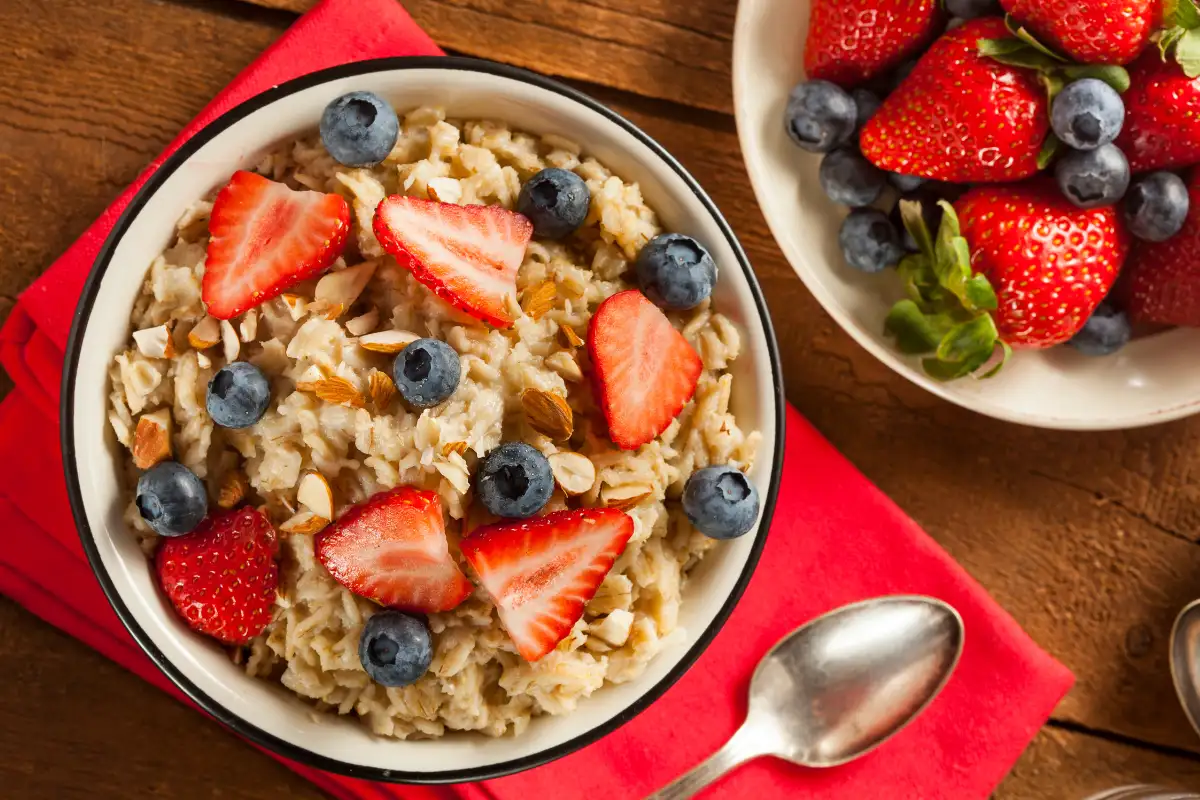
Refeed days are designed to boost metabolism, replenish energy stores, and provide some mental relief that comes with a continuous caloric deficit.
Refeed days are different from “cheat days,” when people tend to overindulge in foods they wouldn’t normally eat. Refeed days are planned increases in caloric intake, mostly in the form of carbohydrates. In this article, we’ll walk through the purpose and science behind refeed days, how to effectively add these days into your plan, and the best foods to eat to maximize the benefits of refeeding.

What is a Refeed Day?
A refeed day is a day on which you intentionally increase your calorie intake. Most of these calories come from carbohydrates. Staying in a caloric deficit for a long time can have consequences, like slowing down your metabolism and impacting your hormone production.
Refeed days are useful to help counteract these effects by providing your body with the short-term energy it needs to help support and restore hormonal balance.
Advertisement
What is the Difference Between a Refeed Day and a Cheat Day
Cheat days can often lead to unrestricted eating with the potential for overeating unhealthy foods (think a whole pizza and tub of ice cream in one sitting).
Refeed days are planned and structured, just like your lower-calorie days. These days are used to increase your healthy carbohydrate intake within a specific range. This ensures you maximize benefits without the negative effects of excessive indulgence. (You shouldn’t feel guilty for eating a few delicious homemade chocolate chip cookies, either!)
Benefits of Incorporating Refeed Days
There’s a science behind refeed days, and it can help your mind and body in many ways.
Reverse Metabolic Adaptations of Dieting
When you stay in a calorie deficit for longer periods of time, your metabolism slows down as your body adapts to a lower calorie intake. This can make it harder to lose weight and maintain energy levels.
Advertisement
Support and Restore Leptin and Other Hormones
Leptin is produced by your fat cells and helps regulate energy balance by suppressing hunger. During calorie restriction, leptin levels drop, which leads to increased hunger and a slower metabolism. Refeed days help boost leptin levels, supporting metabolic function and reducing hunger.
Enhance Energy Levels
By temporarily increasing calorie and carbohydrate intake, refeed days can boost your metabolic rate, improving your energy levels. This can also be a bonus to enhance your workout performance.
Provide a Psychological Boost
Refeed days can also provide a good mental break from dieting. It’s hard not to feel restricted when eating lower calories. Having a refeed days to work in a few extra snacks or foods may help reduce feelings of deprivation and make it easier for you to stick to your plan long-term.
How to Implement a Refeed Day in Your Nutrition Plan
How Much Do I Eat on Refeed Days?
On refeed days, you want to increase your intake to around your maintenance calories or a little over. Most of these extra calories should come from good sources of carbohydrates.
Advertisement
Remember, part of the goal on a refeed day is to provide the energy your body needs to reverse the negative impacts of lower calories. Carbs are essential for this because they provide the short-term energy needed to replenish glycogen stores. 50-100 extra carbohydrates on your refeed days is a good place to start. If you want to know exactly how many extra carbohydrates you need based on your body composition and training goals, a WAG Coach can help.
Increase your calorie intake with whole, nutrient-dense foods rather than processed foods for optimal results. This ensures you get the necessary vitamins, minerals, and fiber to keep you satiated and feeling good on refeed days.
How Often Do I Incorporate a Refeed Day?
How often you have a refeed day depends on your activity level and training intensity. Athletes or individuals who train heavily may benefit from more frequent refeed days.
In general, a good starting point is once or twice per week. If your extra intake feels too big, you can also try splitting the extra carbs into two smaller refeed days.
Try incorporating refeed days into training days or days when you naturally feel hungrier. Monitor how you feel on these days. Then, adjust your calories or timing based on your mood, energy, sleep, and other factors.
Advertisement
The Best Carbohydrate Sources for Refeed Days
Because carbs provide the best quick energy source, you want most of your extra calories to come from them. Try to add these extra grams of carbs from whole foods for all the nutrient benefits and optimal results.
- Denser Whole Grains: Rice, quinoa, whole wheat bread, and pasta.
- Starchy Vegetables: Sweet potatoes, beets, turnips, and squash.
- Legumes: Lentils and beans.
- Fruit: Bananas, apples, mango, pineapple.
Also, remember to follow the normal rules you’d maintain any other day. This means continuing to get adequate high-quality protein and healthy fats.
- High-Quality Proteins: Lean meats, fish, seafood, plant-based proteins, and low-fat dairy products.
- Healthy Fats: nuts and seeds, avocados, and olive oil.
Sample Refeed Day Meal Plan
- Breakfast: Oatmeal with fruit, whole grain toast with nut butter.
- Lunch: Quinoa salad with lean protein and veggies, topped with oil and vinegar.
- Dinner: Sweet potato with lean protein, steamed vegetables and homemade guacamole.
- Snacks: Fruit, whole grain crackers, Greek yogurt with honey, berries, and chopped nuts.
Tips for a Successful Refeed Day
- Listen to your body’s hunger cues
- Stay hydrated
- Avoid processed foods and added sugars
- Plan your meals ahead of time
- Monitor your progress and adjust accordingly
Common Mistakes to Avoid
- Ignoring portion control, overeating, and binging
- Consuming too many unhealthy fats or sugars
- Neglecting protein intake
Final Thoughts on The Best Foods to Eat On Your Refeed Day
Refeed days can be a great tool for boosting metabolism, replenishing energy, and supporting long-term goals. Experiment with the structure and timing of your refeed days to find what works best for you. Connect with a WAG coach for personalized guidance on setting your best macro plan to reach your goals.
Advertisement
Amy Cimo
Amy is a Nutritional Therapy Practitioner and Certified Personal Trainer based in Baton Rouge, Louisiana. She is enthusiastic about helping others find a balance between nutrition, movement, and mindset to live happy and healthy. Amy has a BA in Mass Communication, a BS in Marketing, and a passion for storytelling and connecting people with relevant information and resources.
Get a WAG Coach
Working Against Gravity has led the macro tracking and health space for over a decade. Our team doesn’t just understand the science of nutrition—we’ve spent years mastering the art of tailoring it to fit your life. That means no cookie-cutter plans, just real strategies that have worked for over 30,000 people.
Choose from our membership options and start working with an expert 1-on-1 coach today.



